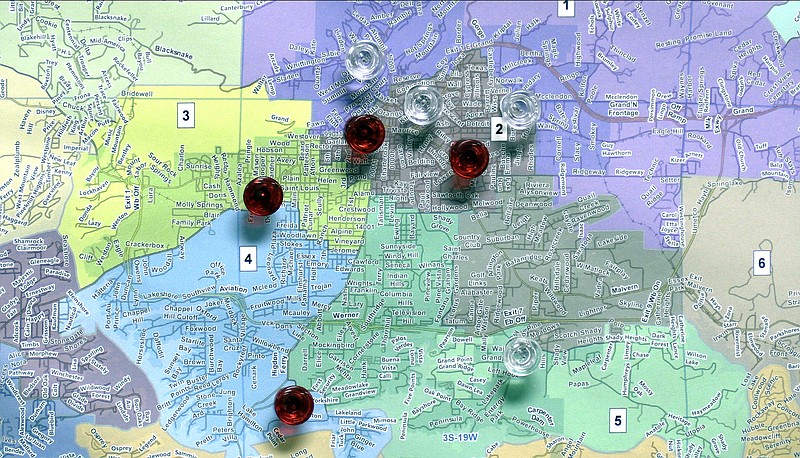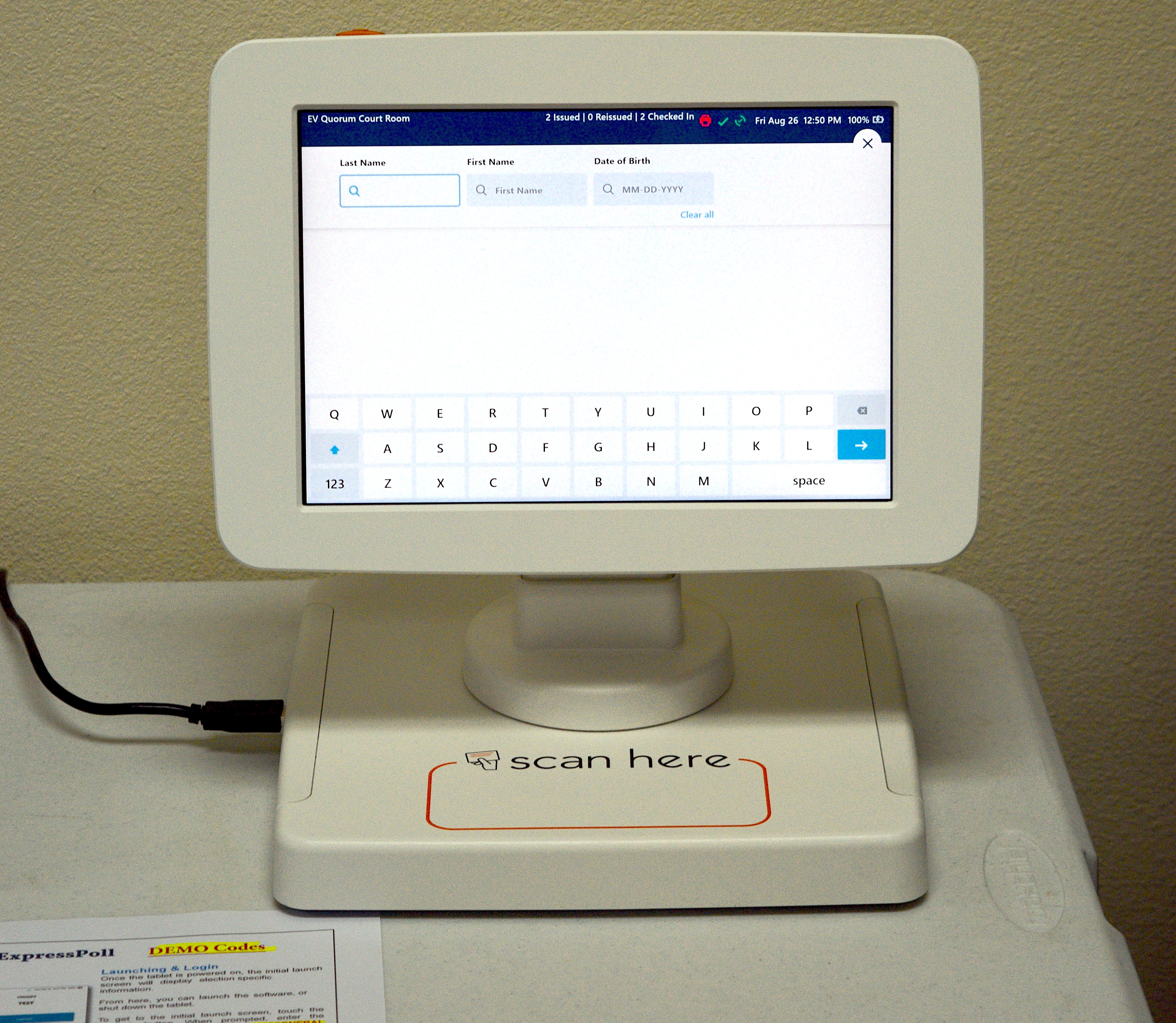The Garland County Election Commission processed paperwork for more than 5,000 absentee ballots in two weeks and counted the ballots before polls closed in the last general election.
Gov. Asa Hutchinson's executive order making COVID-19 a valid reason to vote absentee in the November 2020 election led to a surge in absentee voting, with mail-in ballots making up 12% of the more than 44,000 ballots certified in Garland County.
With no such order in effect this election cycle, Election Commission Chairman/Election Coordinator Gene Haley said absentees should account for a significantly smaller share of the turnout in the Nov. 8 general election. He's expecting about 700 to 800, or about one-sixth of the total the commission certified in November 2020.
The county's application doesn't include COVID-19 as a reason to request an absentee ballot. Eligibility is limited to registered voters unavoidably absent from the polls, those with disabilities or illnesses and those who reside in long-term care facilities. Eligibility criteria notwithstanding, Haley said he's unaware of the county having ever denied an application.
Another executive order Hutchinson issued in 2020 anticipated an increase in absentee voting, giving county election boards an extra week to process voter statements and copies of photo ID voters enclosed in the outer envelope of their absentee mailing.
The order superseded the statute that prohibits election workers from opening outer envelopes until the Tuesday before the election, but no extra time was given to count the ballots. The election code doesn't allow the inner envelope containing the ballot to be opened until 8:30 a.m. on election day.
County election workers scanned more than 5,000 ballots in fewer than 12 hours, allowing the absentee vote to be included in final, unofficial results the commission released on election night.
Steeled by the absentee surge and administering an election during a pandemic, the commission said it's prepared for the Nov. 8 election.
"I think we're in good shape and feel confident it will be a smooth election, but I've been surprised before," Haley said.
He said a strong turnout during the 13 days of early voting will help. The March 2016 primaries were the last time election day turnout exceeded early turnout in Garland County. Haley said the Garland County Library will be added as an early voting location, giving the county six locations.
"That's too many to vote on election day," Haley said of the more than 30,000 people expected to go to the polls. "We have to do early voting. We will do more than 50% of our vote early, and we need to. We just don't have enough equipment and enough people to have everybody vote on election day."
According to official results, more than 31,000 voters turned out on average for the three preceding general elections without a presidential race. More than 14,000 voters cast ballots in the May preferential primaries and nonpartisan general election. The county has more than 60,000 registered voters.
"This is pretty typical of elections in Garland County," Haley said. "A lot of people don't vote in the primary. They wait for the parties to pick their candidates, and then they go vote."
The election will feature new electronic poll books the county purchased with part of its more than $19 million American Rescue Plan Act allocation. The county said it paid about $100,000 for the more than 60 Election Systems & Software poll books. ES&S is the state's election equipment vendor.
The new books scan IDs to select voters from the registration system. Haley said the software defaults to the first three characters of first and last names and the voter's date of birth. Poll workers had to enter that information manually on the old poll books.
"Even if we scan a driver's license and it picks the right person, the law still requires that person to state their name, address and date of birth loud enough for a poll watcher to hear them do that," Haley said.
The May elections were the first without optional verification. Voters can no longer sign an affidavit attesting to their identity in lieu of showing ID.
"Ninety-five percent of our voters come in with their driver's license in their hand," Haley said.
More than a half dozen forms of identification are acceptable under the state's voter ID law. Haley said the new poll books will work on IDs with bar codes. About a dozen other counties are using the new equipment, he said.
The commission plans to meet today to appoint poll workers for the November election. Haley said the county has a pool of about 250.
"Fortunately for us, lack of poll workers has not been an issue," he said. "We're in a position to pick and choose the ones we want."
Oct. 11 is the voter registration deadline. Early voting begins Oct. 24.

